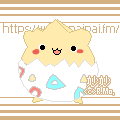繁缛
Overly Elaborative
指诗文辞藻华丽、描写详尽(与“简洁”相对)。西晋时期以陆机为代表,在文学创作上出现了追求辞藻富丽、文思繁密的倾向。陆机的作品多用典故和对偶句,讲求精雕细琢,文辞繁复华美,同时也有不够清新流畅的弊病。至南朝齐梁时期,刘勰《文心雕龙》把“繁缛”列为文章八种风格之一。
This term refers to a literary writing style that is ornate and flowery in diction and excessively detailed and exhaustive in description, in contrast to being “simple and concise.” The tendency to write elaborately about an idea in ornate language first emerged in the Western Jin Dynasty, represented by the writings of Lu Ji. His works were rich in allusions and antitheses, meticulous in diction and description, and elaborate and ornate in style. At the same time, these writings suffered from a lack of clarity and novelty. During the Qi and Liang of the Southern Dynasties, this overly elaborative style was listed as one of the eight major literary styles in Liu Xie’s The Literary Mind and the Carving of Dragons.
引例 CITATIONS
繁缛者,博喻酿采,炜烨枝派者也。 (刘勰《文心雕龙·体性》) (所谓繁缛,就是博用比喻,辞藻丰富,文采灿烂,如同树木多枝、水流派分一样。)
An overly elaborative style is known for its profuse use of allusions and ornate language to generate literary effect, like a tree branching out and a river forking into multiple streams. (Liu Xie: The Literary Mind and the Carving of Dragons)
或藻思绮合,清丽千眠。炳若缛绣,凄若繁弦。 (陆机《文赋》) (写作有时是辞藻华美、文思交会,清新富丽,色彩绚烂。光彩耀目如同装饰繁盛的锦绣,凄切流连如同繁复多变的弦乐。)
Sometimes, one can employ flowery language in writing that makes the idea and language of a work mutually reinforcing, creating a refreshing and appealing effect in a consistently colorful style. It can be dazzling and gorgeous like a piece of exquisitely (Lu Ji: The Art of Writing)
免责声明:以上内容来自互联网,版权归原作者所有,如有侵权请告知,本站将及时删除相关内容。
Overly Elaborative
指诗文辞藻华丽、描写详尽(与“简洁”相对)。西晋时期以陆机为代表,在文学创作上出现了追求辞藻富丽、文思繁密的倾向。陆机的作品多用典故和对偶句,讲求精雕细琢,文辞繁复华美,同时也有不够清新流畅的弊病。至南朝齐梁时期,刘勰《文心雕龙》把“繁缛”列为文章八种风格之一。
This term refers to a literary writing style that is ornate and flowery in diction and excessively detailed and exhaustive in description, in contrast to being “simple and concise.” The tendency to write elaborately about an idea in ornate language first emerged in the Western Jin Dynasty, represented by the writings of Lu Ji. His works were rich in allusions and antitheses, meticulous in diction and description, and elaborate and ornate in style. At the same time, these writings suffered from a lack of clarity and novelty. During the Qi and Liang of the Southern Dynasties, this overly elaborative style was listed as one of the eight major literary styles in Liu Xie’s The Literary Mind and the Carving of Dragons.
引例 CITATIONS
繁缛者,博喻酿采,炜烨枝派者也。 (刘勰《文心雕龙·体性》) (所谓繁缛,就是博用比喻,辞藻丰富,文采灿烂,如同树木多枝、水流派分一样。)
An overly elaborative style is known for its profuse use of allusions and ornate language to generate literary effect, like a tree branching out and a river forking into multiple streams. (Liu Xie: The Literary Mind and the Carving of Dragons)
或藻思绮合,清丽千眠。炳若缛绣,凄若繁弦。 (陆机《文赋》) (写作有时是辞藻华美、文思交会,清新富丽,色彩绚烂。光彩耀目如同装饰繁盛的锦绣,凄切流连如同繁复多变的弦乐。)
Sometimes, one can employ flowery language in writing that makes the idea and language of a work mutually reinforcing, creating a refreshing and appealing effect in a consistently colorful style. It can be dazzling and gorgeous like a piece of exquisitely (Lu Ji: The Art of Writing)
免责声明:以上内容来自互联网,版权归原作者所有,如有侵权请告知,本站将及时删除相关内容。
